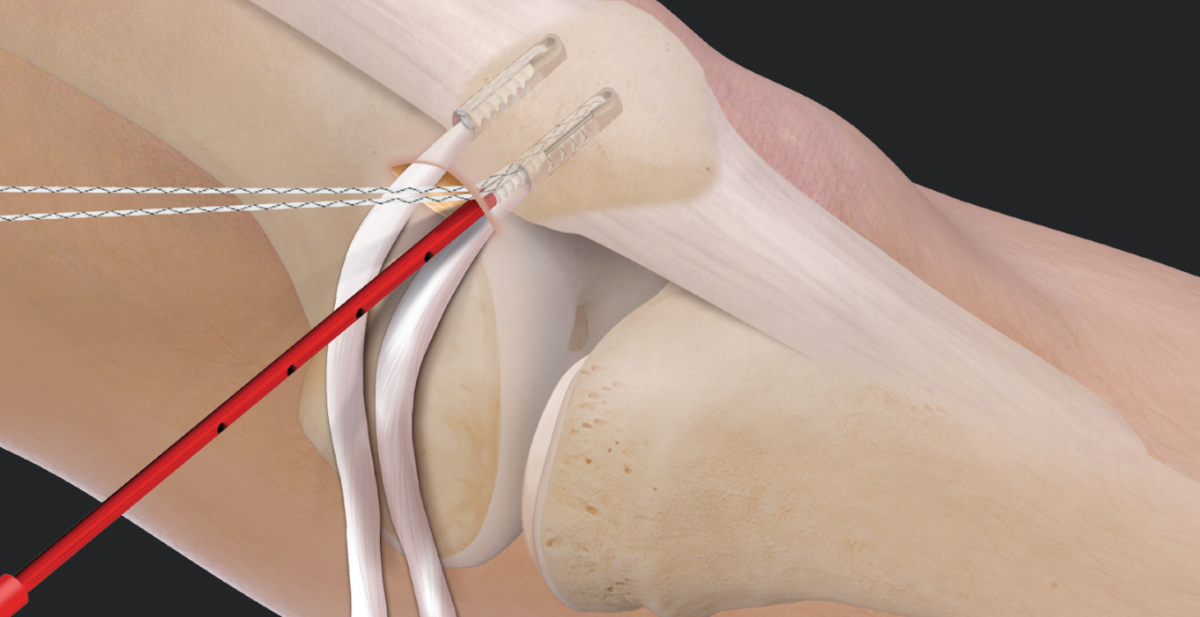The Tensioned Percutaneous Transosseous System (TPTS) has emerged as a significant advancement in orthopedic surgery, particularly for tendon repairs and musculoskeletal procedures. This innovative approach offers several distinct advantages over traditional techniques, providing superior biomechanical stability, minimal soft tissue disruption, and enhanced surgical outcomes. Let’s delve into the comprehensive advantages of TPTS and understand how it revolutionizes the field of orthopedics.
Understanding Tensioned Percutaneous Transosseous System (TPTS)
TPTS involves the percutaneous placement of tensioned sutures through bone tunnels to repair and stabilize tendons, ligaments, and other soft tissues. Unlike traditional open surgery, which requires extensive tissue dissection, TPTS minimizes trauma to surrounding tissues while achieving robust fixation and optimal alignment of repaired tissues. This technique is facilitated through specialized instruments designed to pass sutures under controlled tension, enhancing the strength and durability of tendon repairs.
Key Advantages of Tensioned Percutaneous Transosseous System (TPTS)
- Superior Biomechanical Strength: TPTS provides enhanced biomechanical stability compared to conventional techniques. By securing sutures through bone tunnels under tension, TPTS optimizes tissue approximation and reduces the risk of suture loosening or failure post-operatively. This results in stronger, more durable repairs that withstand physiological stresses and promote long-term healing.
- Minimized Soft Tissue Disruption: The percutaneous nature of TPTS minimizes disruption to surrounding soft tissues, including muscles, tendons, and nerves. This reduces post-operative pain, accelerates recovery times, and lowers the risk of complications such as infections and scarring. Patients undergoing TPTS often experience faster rehabilitation and a quicker return to daily activities compared to traditional open surgery.
- Precise Surgical Technique: TPTS allows for precise placement and tensioning of sutures, ensuring optimal alignment and tension across repaired tissues. This precision enhances the functional outcomes of tendon and ligament repairs, promoting improved joint stability, range of motion, and overall joint function. Surgeons can customize the tension applied to sutures based on the specific requirements of each patient’s condition, enhancing surgical flexibility and patient outcomes.
- Reduced Surgical Time and Hospital Stay: Due to its minimally invasive approach and streamlined technique, TPTS typically requires shorter surgical times and results in minimal blood loss. Patients benefit from reduced hospital stays and faster recovery periods, facilitating a smoother post-operative course and minimizing healthcare costs associated with prolonged hospitalization.
- Broad Applicability Across Orthopedic Conditions: TPTS is versatile and applicable to a wide range of orthopedic conditions requiring tendon and ligament repairs, including:
- Rotator Cuff Tears: Effective in repairing and stabilizing torn rotator cuff tendons in the shoulder, restoring shoulder function and reducing pain.
- Achilles Tendon Ruptures: Provides robust fixation for Achilles tendon repairs, facilitating accelerated recovery and improved ankle function.
- Elbow and Knee Ligament Injuries: Supports reconstruction of ligaments in the elbow (e.g., UCL injuries) and knee (e.g., ACL injuries), restoring joint stability and mobility.
Clinical Evidence and Research Insights
Clinical studies and research trials have demonstrated favorable outcomes with TPTS, including high patient satisfaction rates, reduced complication rates, and improved functional outcomes compared to traditional techniques. Research supports its efficacy in achieving durable tendon repairs and enhancing patient recovery, making it a preferred choice for orthopedic surgeons specializing in tendon and ligament surgeries.
Is Tensioned Percutaneous Transosseous System (TPTS) Right for You?
While TPTS offers significant advantages, its suitability depends on individual factors such as the specific tendon or ligament injury, overall health status, and treatment goals. Consultation with an experienced orthopedic surgeon, such as Dr. Shirish Zope at Yashashree Orthopaedic & Physiotherapy Center in Pimple Saudagar, Pune, is essential to determine if TPTS is the appropriate treatment option for your orthopedic condition.
Summary
The Tensioned Percutaneous Transosseous System (TPTS) represents a paradigm shift in orthopedic surgery, offering superior biomechanical stability, minimal soft tissue disruption, and precise surgical outcomes compared to conventional techniques. Under the guidance of skilled orthopedic surgeons like Dr. Shirish Zope, patients can benefit from enhanced surgical outcomes, accelerated recovery times, and improved quality of life following tendon and ligament repairs.
Explore the transformative advantages of TPTS for orthopedic conditions and discover how advanced surgical techniques can optimize your treatment journey. Consult with Dr. Shirish Zope at Yashashree Orthopaedic & Physiotherapy Center to discuss whether TPTS is the right choice for your tendon or ligament repair needs, and embark on a path towards restored functionality and mobility with confidence.



